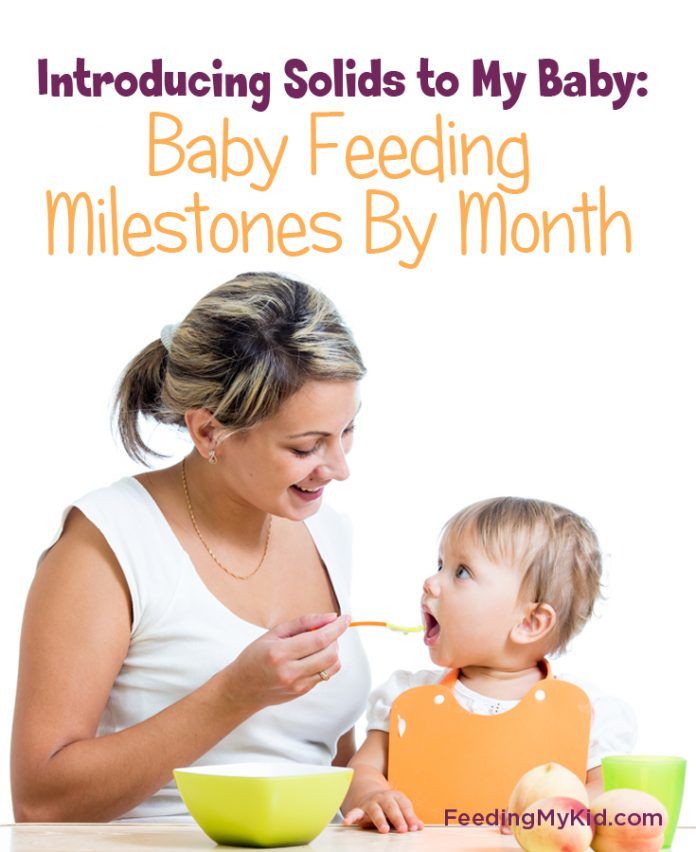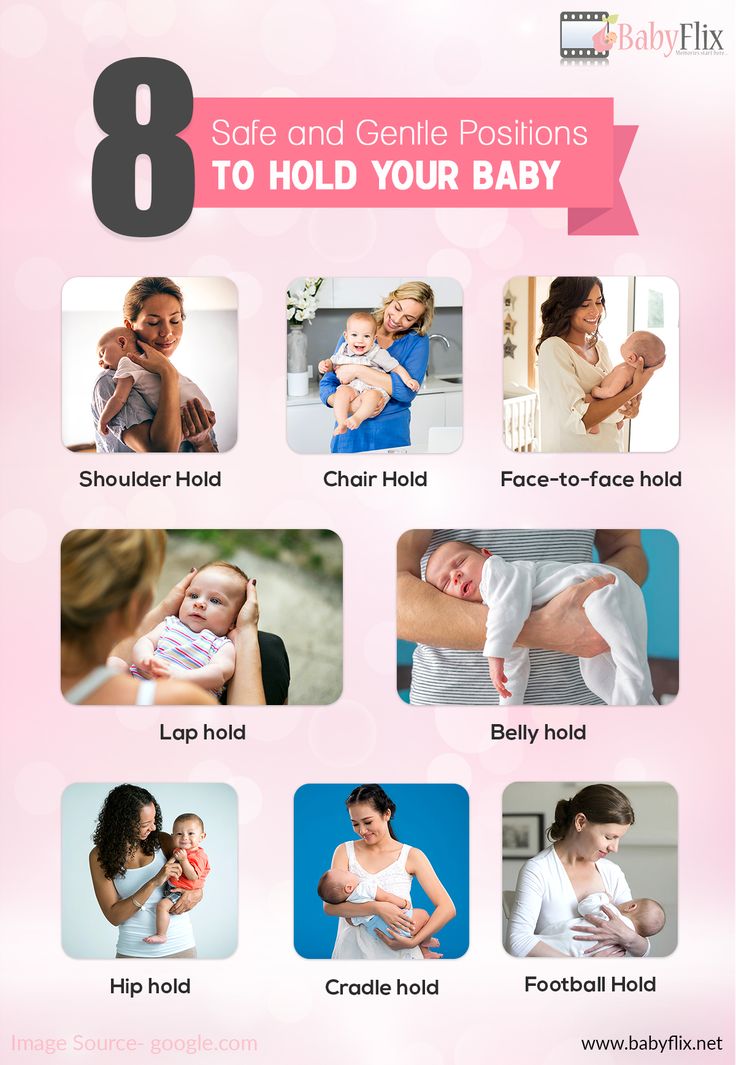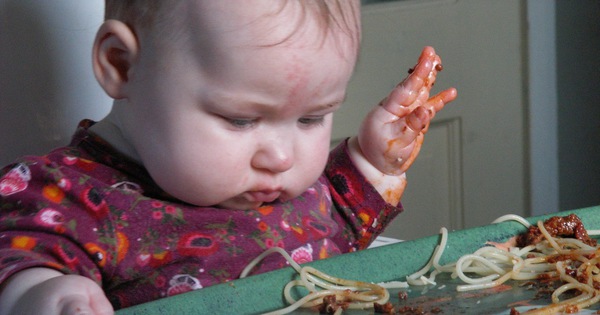Breast milk feeding baby video
Breastfeeding: Mini Parenting Master Class
Transcript of 'Breastfeeding: Mini Parenting Master Class' video
"Did you know that your nipples have good bacteria? So you don’t need to wash them before breastfeeding.
My name is Dr. Michele Griswald, and this is my Mini Parenting Master Class on breastfeeding."
Is breastfeeding easy?
"Sometimes mothers get messages that breastfeeding is natural and it’s easy. Sometimes breastfeeding can be easy with the first baby, and hard with the second baby for the same mother. So it really just depends."
Does breastfeeding hurt?
"You shouldn’t stop breastfeeding if your nipples hurt. You should keep breastfeeding but you should get help to see why it’s hurting."
How much should my baby eat?
"They should see signs of hunger about 8 to 12 times in 24 hours. Newborn babies need to eat a lot because they’re growing rapidly. They double their birth weight in the first six months of life, or before. So you can imagine how much you would need to eat if you had to double your weight."
Should I wash my nipples before breastfeeding?
"It’s not necessary to wash your nipples before you breastfeed, because the breasts and the skin around the nipple actually produces good bacteria. And it’s that good bacteria that helps to prevent infections on the mother’s breast."
When should I start breastfeeding?
"The first hour after birth is a very important time for the mother and the baby. Breastfeeding is a very organized, neurological behavior. And so right after birth, keeping them against the mother’s skin can help them to be calm enough to start to seek the breast. And if we do just leave mothers and babies like that after birth, then they will usually start to go towards the breast on their own. Within about 30 minutes to one hour."
What should I eat while breastfeeding?
"Most mothers can eat anything they want when they breastfeed. They can follow their normal diet. And the interesting thing is whatever they eat, the babies will taste through their milk and start to get them ready for table foods when they’re about 6 months old."
And the interesting thing is whatever they eat, the babies will taste through their milk and start to get them ready for table foods when they’re about 6 months old."
When should I wean my baby?
"Babies will naturally wean starting around one year of age or so because developmentally, they’re changing so much. They’re becoming less focused on their mother, and more focused on learning about the world around them."
Will I have to wean my baby when I got back to work?
"We would hope that mothers who return to work do not have to wean their babies. Mothers need time and they need support to continue to breastfeed their babies. They need the support of their family, they need the support of their workplace, their employers, they need the support of their entire community.
Breastfeeding not just about food. It’s part a nurturing care package that helps children to grow and thrive throughout their entire life."
UNICEF Mini Parenting Master Class with Dr. Michele Griswold PhD, MPH, RN, IBCLC. Dr Griswold is a lactation consultant, registered nurse, breastfeeding researcher and advocate. She represents the International Lactation Consultant Association to the WHO/UNICEF Global Breastfeeding Collective, which calls on governments and society as a whole to provide mothers the support they need to breastfeed.
Michele Griswold PhD, MPH, RN, IBCLC. Dr Griswold is a lactation consultant, registered nurse, breastfeeding researcher and advocate. She represents the International Lactation Consultant Association to the WHO/UNICEF Global Breastfeeding Collective, which calls on governments and society as a whole to provide mothers the support they need to breastfeed.
Breastfeeding: is my baby getting enough milk?
When you first start breastfeeding, you may wonder if your baby is getting enough milk.
It may take a little while before you feel confident your baby is getting what they need.
Exclusive breastfeeding (breast milk only) is recommended for around the first 6 months of your baby's life. Introducing bottle feeds will reduce the amount of breast milk you produce.
Read Unicef's checklist How can I tell if breastfeeding is going well? for more guidance.
Credit:
IAN BODDY/SCIENCE PHOTO LIBRARY https://www.sciencephoto.com/media/294115/view
Signs your baby is well attached
- Your baby has a wide mouth and a large mouthful of breast.
- Your baby's chin is touching your breast, their lower lip is rolled down (you can't always see this) and their nose isn't squashed against your breast.
- You don't feel any pain in your breasts or nipples when your baby is feeding, although the first few sucks may feel strong.
- You can see more of the dark skin around your nipple (areola) above your baby's top lip than below their bottom lip.
Signs your baby is getting enough milk
- Your baby starts feeds with a few rapid sucks followed by long, rhythmic sucks and swallows with occasional pauses.

- You can hear and see your baby swallowing.
- Your baby's cheeks stay rounded, not hollow, during sucking.
- They seem calm and relaxed during feeds.
- Your baby comes off the breast on their own at the end of feeds.
- Their mouth looks moist after feeds.
- Your baby appears content and satisfied after most feeds.
- Your breasts feel softer after feeds.
- Your nipple looks more or less the same after feeds – not flattened, pinched or white.
- You may feel sleepy and relaxed after feeds.
Other signs your baby is feeding well
- Your baby gains weight steadily after the first 2 weeks – it's normal for babies to lose some of their birth weight in the first 2 weeks.

- They appear healthy and alert when they're awake.
- From the fourth day, they should do at least 2 soft, yellow poos the size of a £2 coin every day for the first few weeks.
- From day 5 onwards, wet nappies should start to become more frequent, with at least 6 heavy, wet nappies every 24 hours. In the first 48 hours, your baby is likely to have only 2 or 3 wet nappies.
It can be hard to tell if disposable nappies are wet. To get an idea, take an unused nappy and add 2 to 4 tablespoons of water. This will give you an idea of what to look and feel for.
Ways to boost your breast milk supply
- Ask your midwife, health visitor or breastfeeding specialist to watch your baby feeding. They can offer guidance and support to help you properly position and attach your baby to the breast.
- Avoid giving your baby bottles of formula for the first 6 months or a dummy until breastfeeding is well established.
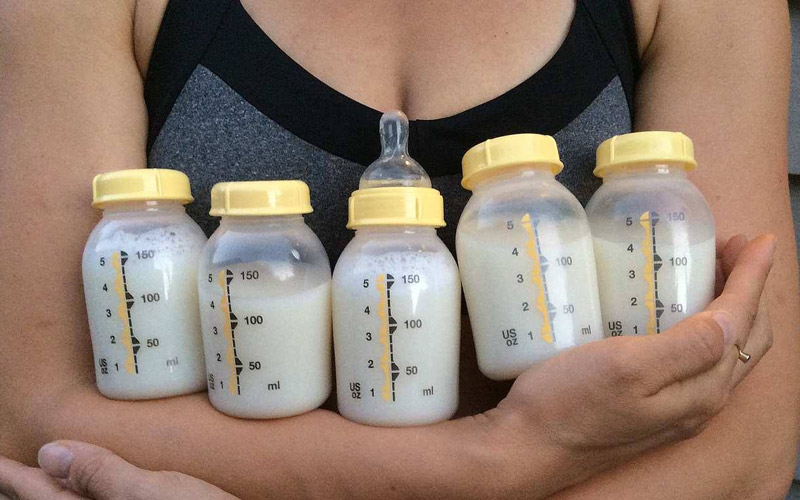
- Feed your baby as often as they want and for as long as they want.
- Expressing some breast milk after feeds once breastfeeding is established will help build up your supply.
- Offer both breasts at each feed and alternate which breast you start with.
- Keep your baby close to you and hold them skin to skin. This will help you spot signs your baby is ready to feed early on, before they start crying.
Things that can affect your milk supply
- Poor attachment and positioning.
- Not feeding your baby often enough.
- Drinking alcohol and smoking while breastfeeding – these can both interfere with your milk production.
- Previous breast surgery, particularly if your nipples have been moved.
- Having to spend time away from your baby after the birth – for example, because they were premature.

- Illness in you or your baby.
- Giving your baby bottles of formula or a dummy before breastfeeding is well established.
- Using nipple shields – although this may be the only way to feed your baby with damaged nipples and is preferable to stopping feeding.
- Some medicines, including dopamine, ergotamine and pyridoxine. Read more about breastfeeding and medicines.
- Anxiety, stress or depression.
- Your baby having a tongue tie that restricts the movement of their tongue.
With skilled help, lots of these problems can be sorted out. If you have concerns about how much milk your baby is getting, it's important to ask for help early.
Speak to your midwife, health visitor or a breastfeeding specialist. They can also tell you where you can get further support.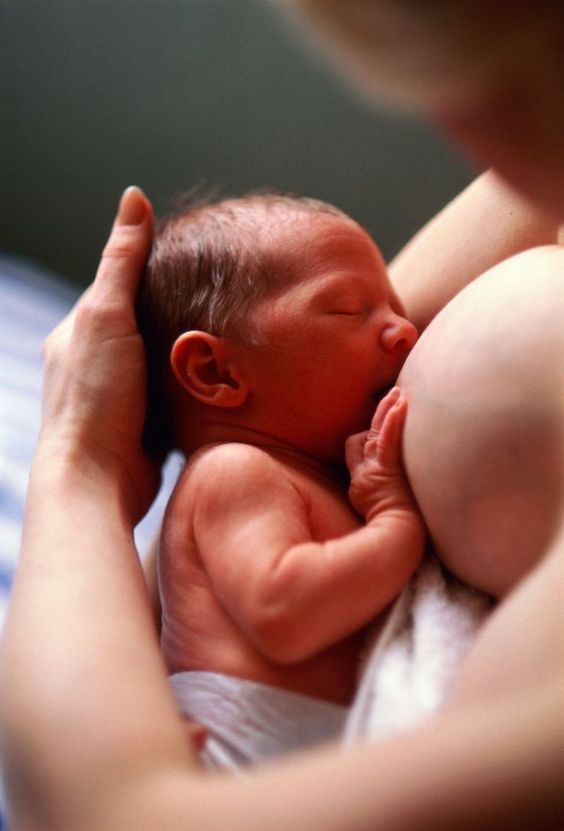
Got a breastfeeding question?
For fast, friendly, trusted NHS advice anytime, day or night, talk to the Start4Life Breastfeeding Friend on Amazon Alexa, Facebook Messenger or Google Home.
Video: Is my baby getting enough milk?
In this video, a health visitor talks about the signs your baby is getting enough milk.
Media last reviewed: 1 November 2022
Media review due: 1 November 2025
Page last reviewed: 6 September 2022
Next review due: 6 September 2025
Until what age can you breastfeed your baby: duration and timing of breastfeeding
I have a friend who is very reminiscent of a character from Game of Thrones: she breastfeeds a child, although he is already four years old. Of course, this is none of my business, but I have a question: is it not harmful for a child? And is this generally normal?
Daniil Davydov
medical journalist
Author profile
Representatives of most international organizations believe that breastfeeding a child up to four years of age and beyond is absolutely normal.
This practice can even be good for the psyche and health of the mother and baby, but only if the feedings are not too frequent.
Go see a doctor
Our articles are written with love for evidence-based medicine. We refer to authoritative sources and go to doctors with a good reputation for comments. But remember: the responsibility for your health lies with you and your doctor. We don't write prescriptions, we make recommendations. Relying on our point of view or not is up to you.
Why breastfeeding a child up to four years is normal
Among people living in modern cities, it is widely believed that breastfeeding a child for more than a year is strange. But in many traditional societies, the duration of breastfeeding is viewed differently. According to anthropologists, in different societies around the world, the range of normal age for self-weaning is from two and a half to seven years.
The duration of breastfeeding in different parts of the world varies greatly - American Academy of Pediatrics position paper
There is nothing unhealthy or wrong in this practice.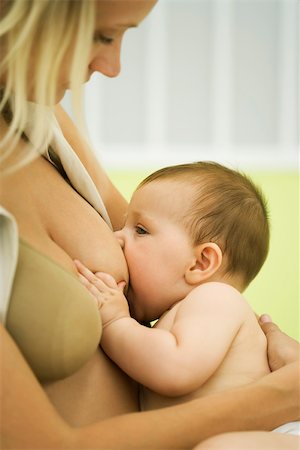 And that's why.
And that's why.
Breast milk remains nutritious even after two years of breastfeeding. Studies show that in the second year after birth, it contains even more fat and total protein, including the natural antibiotic lysozyme, immunoglobulins and the protective protein lactoferrin, which is responsible for non-specific immunity. At the same time, it contains significantly less zinc, calcium and iron.
Study of the composition of breast milk in the second year after birth - Journal of Maternal and Child Nutrition
Mother's milk in the second year of lactation can be a good source of energy - Journal of the American Academy of Pediatrics
This means that mother's milk remains a good source of energy and protein and can play an important role in protecting the baby from infections. And since at this age the child already receives solid food, he will not encounter a lack of food minerals.
Long-term breastfeeding does not increase the risk of mental and physical illness for mother and child. Therefore, the largest international medical organizations, including WHO, recommend breastfeeding for at least six months. And continue as long as it is comfortable for the mother and child.
Therefore, the largest international medical organizations, including WHO, recommend breastfeeding for at least six months. And continue as long as it is comfortable for the mother and child.
It makes sense to continue breastfeeding as long as mother and baby want it - WHO PDF, 74 KB
How to treat effectively and affordably treatment, - in your mail twice a month on Thursdays. Free
How prolonged breastfeeding affects mother and baby
There is very little information about how mothers and children who breastfeed until the age of four feel, because most women do stop this practice earlier. More information is available about families that breastfeed until about two or three years of age.
Continued breastfeeding can improve children's health. For a child to develop normally, it is important that he receives enough energy and nutrients during the critical period - from conception to two years. And because breast milk remains an important source of macronutrients and protective proteins even into the second year of life, researchers believe there are many benefits that babies can get from drinking it.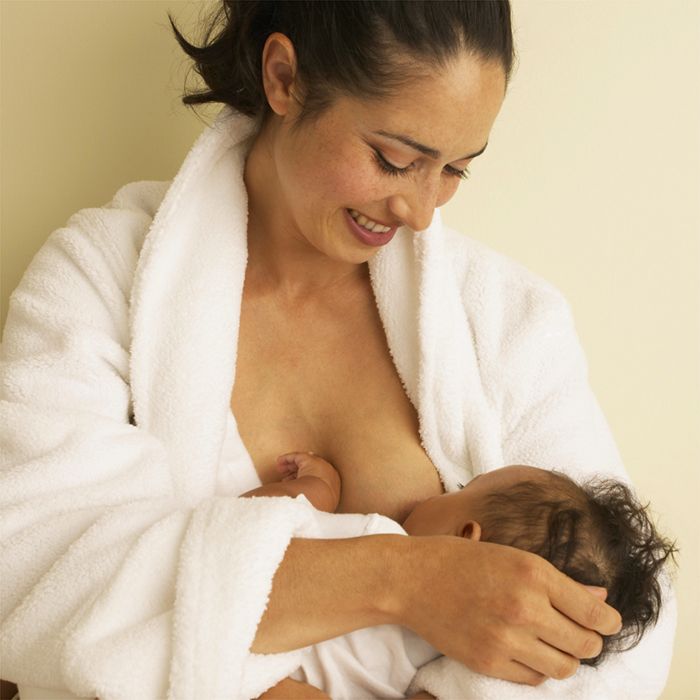
For example, the international study Intergrowth-21ˢᵗ found that prolonged breastfeeding may be beneficial for neurodevelopment. It turned out that two-year-old children who were breastfed for more than seven months developed gross motor skills faster. And it’s also easier for them to climb the stairs and drink from a cup on their own than their peers who were weaned earlier. True, there was no difference in behavior, cognitive abilities and language skills between such children.
Late weaning enhances autonomy in two-year-olds - Nature
Children who are well fed during the critical period suffer less chronic disease as they grow up. This has not yet been definitively proven, but preliminary studies show that children who continue to receive breast milk up to two years of age and beyond have a lower risk of developing chronic diseases: obesity, hypertension, and type 1 and type 2 diabetes in the future.
But there is a caveat. The same preliminary studies show that breastfeeding up to 12 months reduces the risk of severe caries in early childhood compared to those who were breastfed only up to six months. But longer feeding, on the contrary, increases the risk of caries. Especially if the child is fed too often, including at night.
But longer feeding, on the contrary, increases the risk of caries. Especially if the child is fed too often, including at night.
/baby-tooth/
How I spent almost R100,000 on my baby's milk teeth
In addition, babies over eight months old who continue to breastfeed six or more times a day are at risk of malnutrition of dietary minerals, especially iron . This increases the risk of developing iron deficiency anemia.
Continued breastfeeding strengthens the bond between mother and child. In 2019, the National Institute for Child Health and Human Development published data from a study of 1,272 families that examined the relationship between breastfeeding duration and maternal attachment to children.
Mothers who breastfeed for a long time are better at reading baby signals - Journal of Developmental Psychology
Mothers who did not breastfeed at all participated in it, breastfeeding for six weeks, six months, a year, two and three. It turned out that the longer the mother breastfed the child, the better she recognized his signals and needs and more often established a secure attachment with the child - this is when the child is sure that a significant adult will always be there and help if necessary.
It turned out that the longer the mother breastfed the child, the better she recognized his signals and needs and more often established a secure attachment with the child - this is when the child is sure that a significant adult will always be there and help if necessary.
This effect persisted even when the children in the study were 11-15 years old. Mothers who breastfed until age three got on better with their teens than women who stopped breastfeeding earlier.
Long-term breastfeeding reduces the mother's risk of chronic disease. There is much compelling evidence that women who breastfeed for more than a year have a reduced risk of type 2 diabetes, hypertension, breast and ovarian cancer. The longer a mother breastfeeds, the lower the risk of both types of cancer.
How to be women who choose continuous breastfeeding
Vera Yakupova
Ph.D., founder of the Good Point Psychological Center
Author profile
matter of mother and child. It can last as long as this dyad is comfortable. Breastfeeding may not be at all, or it may last a year, two or three, or until self-weaning - all these are normal options.
It can last as long as this dyad is comfortable. Breastfeeding may not be at all, or it may last a year, two or three, or until self-weaning - all these are normal options.
There are many studies looking at the relationship between breastfeeding and different aspects of a child's development. But in general, we can say that long feeding is more likely not about the need for nutrition, since the child is already fully eating from the common table, but about maintaining some kind of emotional contact. There is nothing dangerous in this.
The breast is a sexualized object for adults, but not for children. Therefore, the fact that because of breastfeeding the sexuality of the child will be somehow violated is the point of view of adults. And quite strange. The body of a mother for a child is a source of security, comfort, coziness, some very basic and deep things. Therefore, feeding in terms of sexuality is definitely not dangerous.
At the same time, it is important that parents observe the needs of the child and how they are being transformed. This is necessary so as not to miss the moment when he loses interest in breastfeeding. And also not to replace the needs of the child with our own.
This is necessary so as not to miss the moment when he loses interest in breastfeeding. And also not to replace the needs of the child with our own.
Sometimes it happens that parents have a lot of feelings about breastfeeding - much more than the child himself. For example, they may feel anxious or sad that the feeding is over and the baby is growing up. Or, on the contrary, consider that this is an unpleasant process and should be completed faster. Therefore, a mother should also observe herself, too, in order to figure out what needs she satisfies with breastfeeding.
Society in general - doctors who are not up to date with current research, relatives, friends, and even random people at the bus stop - are often critical of mothers. It doesn't matter what mom does. If she doesn't feed, it's bad. If he feeds, then somehow it’s wrong, in the wrong place, not covered like that, too long or too little. That is, in principle, there is no good option: there is always something to condemn, something to criticize for. It seems to me that this is such a separate phenomenon, living an independent life.
It seems to me that this is such a separate phenomenon, living an independent life.
Perhaps mothers are just a convenient target for criticism and condemnation.
Now in society very high demands are placed on them. It is generally accepted that mothers should control almost all areas of a child’s life by 100%. If any difficulties arise, then this is the responsibility of the mother, or even her fault.
Of course, this approach is unrealistic, disrespectful and unscientific. Therefore, I think that focusing on the opinion of society in parenthood is futile: it will be a constant source of anxiety. There is one important support - "me and my child."
I would advise mothers to focus only on their own needs and the needs of their child. You need to act in a way that is convenient, comfortable and good for both of you. It makes sense to take into account the opinion of only those specialists whom you trust, with modern humanistic views. And those, after communicating with whom you would rather find the ground under your feet, and not get another portion of anxiety.
What's the bottom line
If your friend's baby gets enough solid food and breastfeeds no more than 2-5 times a day, the benefits outweigh the harm. Perhaps such a decision would even be worth supporting. Mothers who breastfeed for more than a year often complain that they are laughed at and do not understand their choice. Moreover, not only friends and acquaintances behave this way, but also doctors.
Studying the experience of mothers who breastfeed for a long time - Journal of Breastfeeding Medicine
What to do? Readers ask - experts answer
Ask your question
Different postures for breastfeeding to find the one that best suits you and your baby. You can see the options in our selection of photos
Share this information
There is no right or wrong way to hold the baby while feeding
and mom and baby are sure to find their favorite position.
It is important that both you and your baby feel comfortable. 1.2 It's good to learn a few different breastfeeding positions and techniques because life's circumstances often require us to be flexible, especially as your baby gets older and you start to leave the house more often.
Whatever position you choose to breastfeed your baby, remember a few simple rules.
- Prepare everything you need before feeding, including drinks, food, mobile phone, TV remote control, book or magazine. And do not forget to go to the toilet - the feeding process can take a long time!
- Make sure your baby is comfortable. Whichever position you choose, it's important to keep your baby strong, level, and provide good support for their head, neck, and spine.
- You should also be comfortable. Don't stress. If necessary, use pillows of different sizes or rolls of towels to support your back or arms.
- Make sure your baby is latching on correctly.
 Proper grip is the key to comfort when breastfeeding.
Proper grip is the key to comfort when breastfeeding. - If your baby does not latch on well or you experience pain while feeding, contact a lactation consultant for help. The specialist will also be able to show you how to hold your baby more comfortably.
1. Relaxed feeding or reclining position
Relaxed feeding position, also known as biological feeding, 1 is often the first position for most mothers. If, immediately after birth, the baby is placed on the mother’s chest or stomach, normally, he instinctively reaches for the breast and tries to grab the nipple. This phenomenon is known as the breast seeking reflex. Skin-to-skin contact stimulates the infant's feeding instinct, and gravity helps him to latch onto the breast and maintain balance.
But it's not just newborns that can be fed in the reclining position - this position is great for babies of all ages. It can be especially helpful if your baby does not latch well in other positions or does not like to be touched during feeding, and also if you have too much milk flow or too large breasts.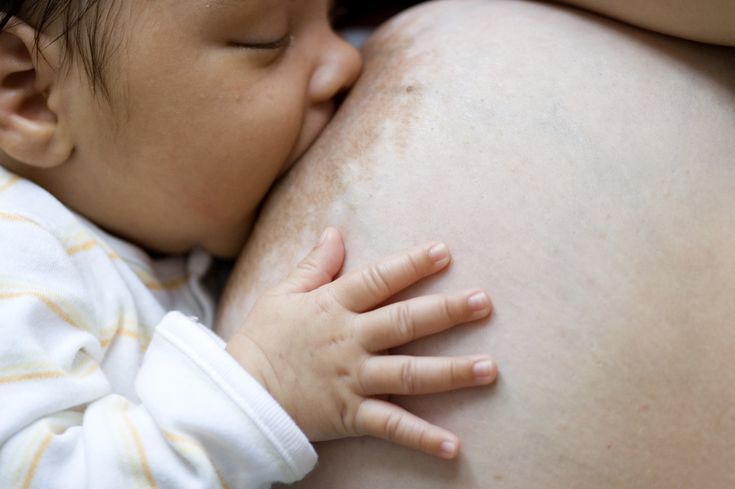 Isabelle, a mother from the UK, shares her experience: “I had large breasts, and the baby was born small - 2.7 kg, so it was not easy to find a comfortable position at first. After a few weeks, it became clear that there was no “correct” posture for me. As a result, I most often fed lying down, putting the baby on my chest. ”
Isabelle, a mother from the UK, shares her experience: “I had large breasts, and the baby was born small - 2.7 kg, so it was not easy to find a comfortable position at first. After a few weeks, it became clear that there was no “correct” posture for me. As a result, I most often fed lying down, putting the baby on my chest. ”
It is more convenient to feed not lying flat on your back, but half-sitting, leaning on pillows. So you will have a back support and you will be able to watch the baby during feeding.
2. Cradle position
This is the classic
first thought of breastfeeding. Mom sits
straight, and the baby lies on her side on her arm, pressing her stomach against her stomach. 3 Although this is a very popular position, it is not always easy to master with newborns because it gives the baby less support. Try putting a pillow under your back, and put a special breastfeeding pillow on your knees and lean on it with your hands. So you can more reliably support the child, without overstraining your back and shoulders. Just make sure that the baby does not lie too high on the pillow for feeding. The breast should remain at a natural level so that the baby can grab it without effort, otherwise sore nipples cannot be avoided.
Just make sure that the baby does not lie too high on the pillow for feeding. The breast should remain at a natural level so that the baby can grab it without effort, otherwise sore nipples cannot be avoided.
“I breastfed in the cradle position because it suited me perfectly! It was comfortable and I loved just sitting and looking at my little one,” recalls Rachel, a mother of two from Italy.
3. Cross Cradle
This breastfeeding position looks almost exactly like the cradle, but the baby is on the other arm. 3 This gives baby support around the neck and shoulders so he can tilt his head to latch on. This position is great for breastfeeding newborns and small babies, as well as for babies who do not latch well. Since the baby lies completely on the other hand, it becomes easier to control his position and you can adjust the chest with your free hand.
Julie, a UK mother of two, finds this position very practical: “I usually breastfeed my youngest in the cross cradle position. So I have a free second hand, and I can take care of an older baby at the same time. ”
So I have a free second hand, and I can take care of an older baby at the same time. ”
Do not hold the baby's head at first, otherwise you may inadvertently press his chin against his chest. Because of this, the child will not be able to take the breast deeply, because the nipple will rest against the base of the tongue, and not against the palate, which will lead to inflammation of the nipples. As the child grows, this position becomes more comfortable, and he can rest his head on your palm (as shown in the photo above).
4. Underarm breastfeeding
In this position, also known as the “ball grip”, the mother sits with the baby lying along her arm at the side, legs towards the back of the chair (or any other seat). 3 Another comfortable position for newborn breastfeeding, you can give your baby good support, full control of the position and a good view of his face. And the baby feels safe in close contact with the mother's body. This position is especially good for those who have had a caesarean section or a premature birth, as well as mothers of twins and women with large breasts.
“When I breastfed my first daughter, I had very large K-sized breasts—twice the size of her head,” recalls Amy, an Australian mother of two. - I put rolls of towels under each breast, because they were very heavy, and fed my daughter in a pose from under the arm, but only sitting straighter so as not to crush her. This position was also convenient because I had a caesarean section and could not put the baby on my stomach.
5. Side-lying position
The side-lying position is ideal for relaxed
feeding at night in bed or on the couch. If you had a
caesarean section or ruptures during childbirth, this position may be more comfortable than sitting down. 3 In this position, mother and baby lie side by side, tummy to tummy.
“It was difficult for me to sit during endless night feedings, firstly because of the caesarean section, and secondly because of lack of sleep,” recalls Francesca, a mother from the UK. “And then I discovered that you can feed your baby lying on your side and rest at the same time. ”
”
“Because of the short tongue frenulum, Maisie could only properly latch on to her breasts while lying on her side. The lactation consultant showed me how it's done. In this position, the flow of milk was optimal for my daughter, and it was easier for her to keep the nipple in her mouth. As she got older, she became much better at grabbing her breasts in normal positions,” says Sarah, mother of two from Australia.
6. Relaxed breastfeeding after caesarean section
If you can't find a comfortable position for breastfeeding after caesarean section, 3 try to hold the baby on the shoulder while reclining — this does not put pressure on the postoperative suture and allows you to breastfeed the baby comfortably. You can also try side feeding.
7. Upright breastfeeding or “koala pose”
When breastfeeding in an upright position or “koala pose”, the baby sits with a straight back and a raised head on the mother's hip. 4 This position can be tried even with a newborn if it is well supported, but it is especially convenient for feeding a grown child who can already sit up by himself. The upright sitting position, or “koala pose,” is great for toddlers who suffer from reflux or ear infections and feel better sitting. In addition, this pose may be suitable for children with a shortened frenulum of the tongue or reduced muscle tone.
The upright sitting position, or “koala pose,” is great for toddlers who suffer from reflux or ear infections and feel better sitting. In addition, this pose may be suitable for children with a shortened frenulum of the tongue or reduced muscle tone.
“When my daughter got a little older, I would often feed her in an upright position, which was more comfortable for both of us, and I could still hold her close,” recalls Peggy, a mother from Switzerland. “Besides, it was possible to discreetly breastfeed her in public places.”
8. Overhanging position
In this position, the baby lies on his back, and the mother bends over him
on all fours so that the nipple falls directly into his mouth. 4 Some moms say this breastfeeding position is good to use from time to time for mastitis, when touching the breasts is especially unpleasant. Some say that this breastfeeding position helps with blockage of the milk ducts, although there is no scientific evidence for this yet. You can also feed in the “overhanging” position while sitting, kneeling over the baby on a bed or sofa, as well as reclining on your stomach with support on your elbows. Pillows of various sizes that you can lean on will help you avoid back and shoulder strain.
You can also feed in the “overhanging” position while sitting, kneeling over the baby on a bed or sofa, as well as reclining on your stomach with support on your elbows. Pillows of various sizes that you can lean on will help you avoid back and shoulder strain.
“I have breastfed several times in the 'overhang' position for clogged milk ducts when no other means of dissolving the blockage worked. And this pose seems to have helped. I think it's because of gravity, and also because the breasts were at a completely different angle than with normal feeding, and my daughter sucked her differently, ”says Ellie, a mother of two from the UK.
Feeding in the "overhanging" position is unlikely to be practiced regularly, but in some cases this position may be useful.
“I used to breastfeed in the overhang position when my baby was having trouble latch-on,” says Lorna, mother of two in the UK. - This, of course, is not the most convenient way, but then I was ready for anything, if only he could capture the chest. We succeeded and have been breastfeeding for eight months now!”
We succeeded and have been breastfeeding for eight months now!”
9. Breastfeeding in a sling or in a sling
Breastfeeding in a sling takes some practice, but it can be used to go out of the house, look after older children, or even do a little household chores.
The sling is also useful if the baby does not like to lie down or is often attached to the breast. Lindsey, a mother of two in the US, notes: “I used the carrier frequently for both of my children. When we were out, I tied the sarong around my neck and covered the carrier with it. Under such a cape, the baby can eat as much as he wants until he falls asleep.
This breastfeeding position is best when the baby is already good at breastfeeding and can hold his head up by himself. Any slings are suitable for breastfeeding, including elastic and rings, as well as carrying bags. Whatever option you choose, the main thing is that you can always see the face of the child, and his chin does not rest against his chest.
10. Double hand-held breastfeeding
Double hand-held breastfeeding (or “double-ball gripping”) is great for mothers of twins—you can breastfeed both at the same time, with your arms relatively free. 4 When feeding in this position, it is advisable to use a special pillow for breastfeeding twins, especially at first. It will provide extra support and help keep both babies in the correct position, as well as reduce the burden on the abdomen if you had a caesarean section. In addition, the hands are freer, and if necessary, you can deal with one child without interfering with the second.
“My twins were born very tiny and had to be fed every two hours at any time of the day or night. Very soon it became clear: if I want to do anything besides feeding, I need to feed them both at the same time, - says Emma, mother of two children from the UK. “I breastfed them two by hand using a breastfeeding pillow.”
Other good positions for breastfeeding twins are two criss-cross cradles, one baby in the cradle and the other close at hand, reclining feeding, or sitting upright (one baby on one side, the other on the other).
11. Feeding in the “hand-supported breast” or “dancer's hand” position
muscle tone (which is typical for premature babies, children suffering from various diseases or Down syndrome), try supporting his head and your chest at the same time. 4 Grab your chest with your palm underneath so that your thumb is on one side and all the others are on the other. Move your hand slightly forward so that your thumb and forefinger form a "U" just in front of your chest. With the other three fingers, continue to support the chest. With your thumb and forefinger, hold the baby's head while feeding so that his chin rests on the part of the palm between them, your thumb gently holds the baby on one cheek, and your index finger on the other. So the baby gets excellent support, and you can control his position and see if he is holding his breast.
Literature
1 Colson SD et al. Optimal positions for the release of primitive neonatal reflexes stimulating breastfeeding. Early Hum Dev . 2008;84(7):441-449. - Colson S.D. et al., "Optimal Positions for Provoking Primitive Innate Reflexes to Induce Breastfeeding." Early Hume Dev. 2008;84(7):441-449.
Early Hum Dev . 2008;84(7):441-449. - Colson S.D. et al., "Optimal Positions for Provoking Primitive Innate Reflexes to Induce Breastfeeding." Early Hume Dev. 2008;84(7):441-449.
2 UNICEF UK BFHI [ Internet ]. Off to the best start ; 2015 [ cited 2018 Feb ]. - UNICEF UK, Baby-Friendly Hospital Initiative, Start the Best You Can [Internet]. 2015 [cited February 2018].
3 Cadwell K. Latching - On and Suckling of the Healthy Term Neonate: Breastfeeding Assessment. J Midwifery & Women's Health. 2007;52(6):638-642. — Cadwell, K., "Latching and sucking in healthy newborns: evaluation of breastfeeding." F Midwifery Women Health. 2007;52(6):638-642.
4 Wambach K, Riordan J, editors.



